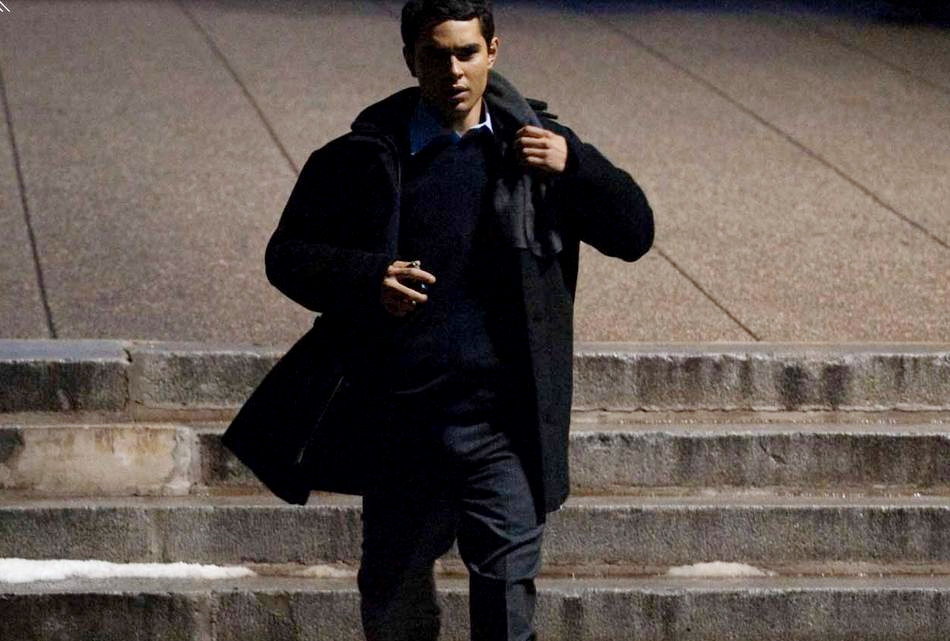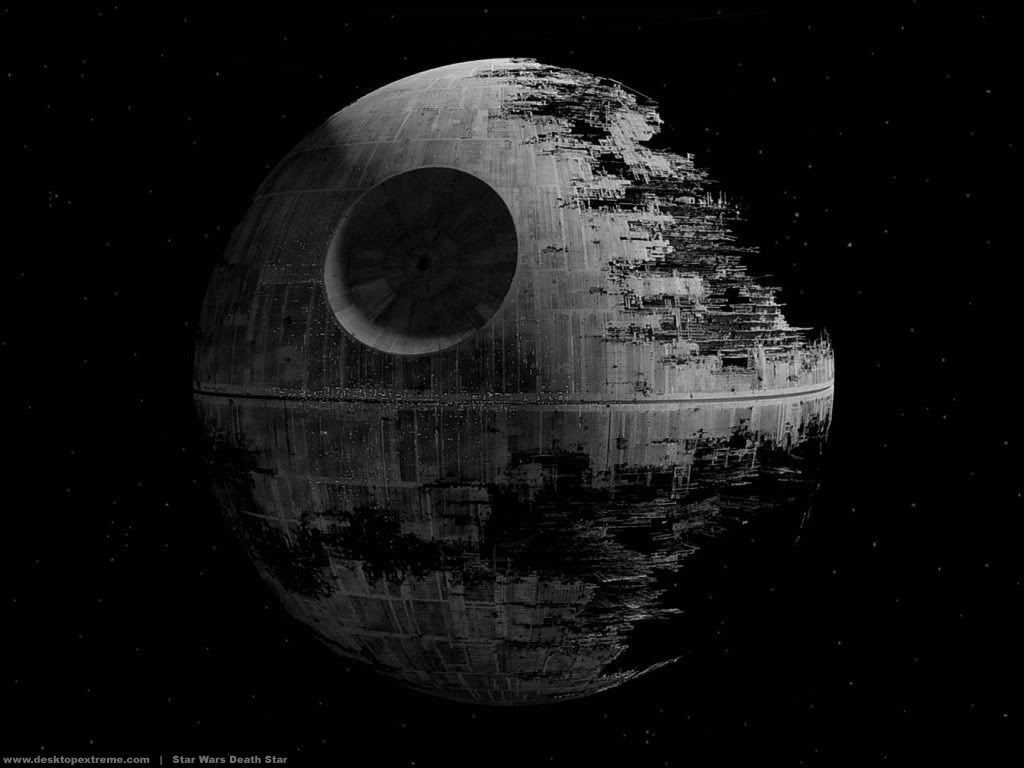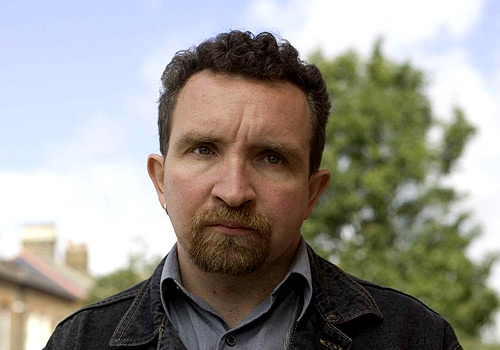Star Wars: Episode VII – Rise of the Other (2017) Geekscape Review.
Rated PG. Dir. Roman Coppla. 177 minutes.
It’s been twelve years since the last canonical “Star Wars” film (the three animated features in the interim, according to the people who keep track of this sort of thing, don’t count), and it seems that George Lucas, previously maligned to the nth degree for the general overstuffed confusion of the “Star Wars” prequels, has been trying to do everything he can to redeem himself in the eyes of his fans. His approach to the highly anticipated “Rise of the Other,” a chronological sequel to “Return of the Jedi” (1983), is simultaneously counterintuitive, and oddly fitting; With the prequels, the admittedly demanding fans demanded a canonical next chapter from the original filmmaker. They were, despite all the defense the prequels have received, disappointed. This approach for the “Star Wars” sequels seems to be catering to the fans’ new demands by staying as far back from the actual filmmaking process as possible, and only contributing the story. He’s giving the fans what they want by not giving much.
And frankly, thank goodness. “Rise of the Other,” directed by Roman Coppola, is a surprisingly human story, devoid of all the cold, confusing dialogue, thin characterization, and over-use of physics shattering CGI that marked the weakest parts of “Star Wars” parts I, II, and III. “Rise of the Other,” despite being made by a relative outsider (accusations of nepotism notwithstanding), feels like a return to form for the “Star Wars” movies, recapturing the grandness of space, and the adventure of pulp action. Some “Star Wars” fans may feel that it’s a little too cerebral (indeed, the Internet has been accusing “Rise of the Other” feeling a lot more like J.J. Abrams’ beautifully intelligent “Star Trek: The Next Generation” (2015) than an actual “Star Wars” film). But I appreciated Aaron Sorkin’s well-thought-out screenplay, and attention to scientific detail; a complaint I’ve always had about “Star Wars” is its lack of hard sci-fi, that is: inventing imaginary machine that feel like they may actually have a solid scientific basis.
The story is a bit labyrinthine, so stick with me: The film’s pre-title scrawl (can’t get rid of those so easily) informs us that aged Luke Skywalker, benevolent and charismatic ruler of the known galaxy, has died. The galaxy has enjoyed a generation of peace, and ruling duties have left in the hands of Luke’s son Aaron (Max Minghella), who was declared the galaxy’s next ruler when he was still a little kid. He’s now in his late 30s, is a lousy Jedi (he can’t really float objects), and completely unsure as to how to run things (there’s an early scene where he, in one virtuosic shot, greets the happy crowds, shakes their hands, smiles, kisses yellow-skinned alien babies, enters a chamber, locks the door, and his face falls as he is led to a desk by an aide, and told what papers to sign). Aaron Skywalker is surrounded by gladhanding suck-ups who are a lot more experienced than he, including the blue-skinned Lui (Zena Grey), the impatient Max (the terrific Eddie Marsan), and the quiet, limping mutant Vantus (Chad Lindberg). These three remember when The Empire was still in charge.

The story gets going when it is revealed that a rogue group of warriors is trying to overthrow the Republic from a backwater planet. For most of the film, this group is referred to only as “The Rebels,” giving “Rise of the Other” a classical term for the fans, but also playing a clever flip on the earlier films’ power dynamic; all of a sudden the rebels are the bad guys, and the Republic are a benevolent dictatorship only trying to defend their turf from a group of upstarts. Max heads an investigation into various bombings around the film’s central homeplanet, and inexplicably brings Aaron along with him. The investigation scenes are boilerplate police procedural, but are fascinating to watch; I especially liked the scene where Max used some poisonous centipedes (the same from “Attack of the Clones, if I recall) to track down the whereabouts of a hiding pet which has swallowed some vital evidence.
Meanwhile, we see some of the scrappy machinations of “The Rebels” who call themselves The Brotherhood of The Arc, after an old Jedi myth, who live on what is essentially a moon-sized space ship; it’s essentially a Death Star, but without the evil baggage of the name (they call it The Ovo, which means egg, which is kinda dumb). The Arc, it seems have The Force on their side, but they use the term “The Force” all but once. They seem like a band of warrior monks who have been coming up with their own way of honing their psychic powers. Evidently, there is more than just a Light and a Dark to The Force. There is also an independent streak.

The Arc is led by the feisty fortysomething Joan (Amber Heard in age makeup), and has been trying to unite all of the independent planets in the galaxy in order to grow her army. Joan is a fantastic character, who spits and froths when needed, and is cool and calculating at just the right moments. That Heard pulls off such a great performance is astonishing. She is seen, in her introductory scene, fighting her way through a jungle stronghold using only a chain and a light-saber-like knife, severing hands and feet, but killing no one, working her way over the roofs into a dignitary’s bedroom, only to offer him a free meal and kind words about how great his people are. It’s pretty badass.

Andyway, Joan and her main recruit, Zvi (Campbell Scott) team up to take down the Republic, and, with battle finesse, also fight their way to the Republic’s home planet, where they confront Aaron. Aaron, in what is perhaps an unwise move, decides that an act of war would be detrimental, and takes a shine to Zvi’s daughter (Mika Boorem), and actually marries her the following day. Max, Lui and Vantus, however, decide to go behind Aaron’s back, and actually declare war on the Arc, and there’s a spectacular battle where they blow up The Ovo.

We are treated to what is one of the most spectacular battles in the entire “Star Wars” series with the Ovo assault. Unlike The Death Star, The Ovo is a sprightly and resourceful little ship that can play host to a dogfight one moment, but do some fighting itself the next. We see the interior of The Ovo a lot, which looks more like an atrium than an actual spaceship (I like the mixture of the organic with the technological), and Coppola’s use of crosscutting is nothing short of brilliant. That the battle end on a note of ambivalence adds some very much needed meat to a series that has, until now, been sorely lacking.
The film ends with Max, Lui and Vantus signing papers for Aaron (only trouble ahead), and Aaron and Zvi’s daughter having an awkward and sunny breakfast. Joan’s fate is a cruel one, and I will leave you to discover it. I will say, though, that she will not be seen in “Star Wars VIII.”
The story may sound Shakespearean, but that’s just fine by me. If you’re going to rip off a style, rip off a master.
With his prequels, George Lucas tried to display that he was the forerunner in CGI technology, and filmed most of his actors on green screens, and created most every background in computers. This made for films that were so jam-packed with wiggly imagery, that they became sterile and uninvolving. It’s refreshing that Coppola has taken an old-school approach filming on real film stock (a rare commodity these days), and building real sets. Like I said, the interior of The Ovo was a marvel to behold, but all the rest of the buildings (Aaron’s mansion, Max’s interrogation room, Joan’s execution platform) were huge, real monstrosities that lend a hefty, real-world grandeur to the sets that CGI lacks. If Internet rumors are to be believed, these sets will make appearances in the following two films as well (and these “Star Wars” films always come in threes). It’s a good thing. Such sets are rarely seen outside of Roman epics of the 1950s and ’60s.
I can’t imagine what this film would have been like if Lucas had decided to write/direct it himself. Likely he would have had used the CGI approach, and the look of the film would have distracted from the story.
The most curious thing about “Rise of The Other” (and perhaps the most refreshing), is how little it draws on elements from the previous films. There is a light saber thing, but it’s used very little. There is a reference to Luke Skywalker, but he’s dead. The Force is only mentioned once. Princess Leia is referred to in the dialogue, but only to mention that she had no heirs (and that she abdicated). All the old characters (Han Solo, Chewbacca, R2-D2, etc.) are nowhere to be seen. I suppose after the sloppy fanboy placating that Lucas tried with parts I, II, and III, he decided to distance himself from the character hammering he would likely have done.

This film is slated to open next week on Wednesday November 15th. The opening nights are already sold out, and the collectible laserdisc box sets that Lucas put out have already sold out in some stores. The film hardly needs encouragement, but it was so very nice to see someone putting actual thought and depth into a new “Star Wars” story. I commend Lucas for his restraint, Coppola for his skill, Heard, Minghella and Marsan for their performances, and the fans for continuing to believe. Will they like it? Only time will tell.
The final Star Wars trilogy continues in Star Wars: Episode VIII – Destruction of the Arc (2018). Read the review here!
The final Star Wars trilogy concludes in Star Wars: Episode IX – The Fall of Vantus (2020). Read the review here!
Witney Seibold is a polite and dashing writer living in Los Angeles. When he’s not writing, he’s watching movies, reading old books, and nurturing his growing disapproval of young people today. He nonce worked as a professional film critic for a local newspaper, and now maintains his own ‘blog (which can be accessed at http://witneyman.wordpress.com), where you can read the nearly 700 articles he has published to date, some of which are professionally written and genuinely insightful, despite the typos. He likes comments, positive and negative, and encourages you to leave some.
